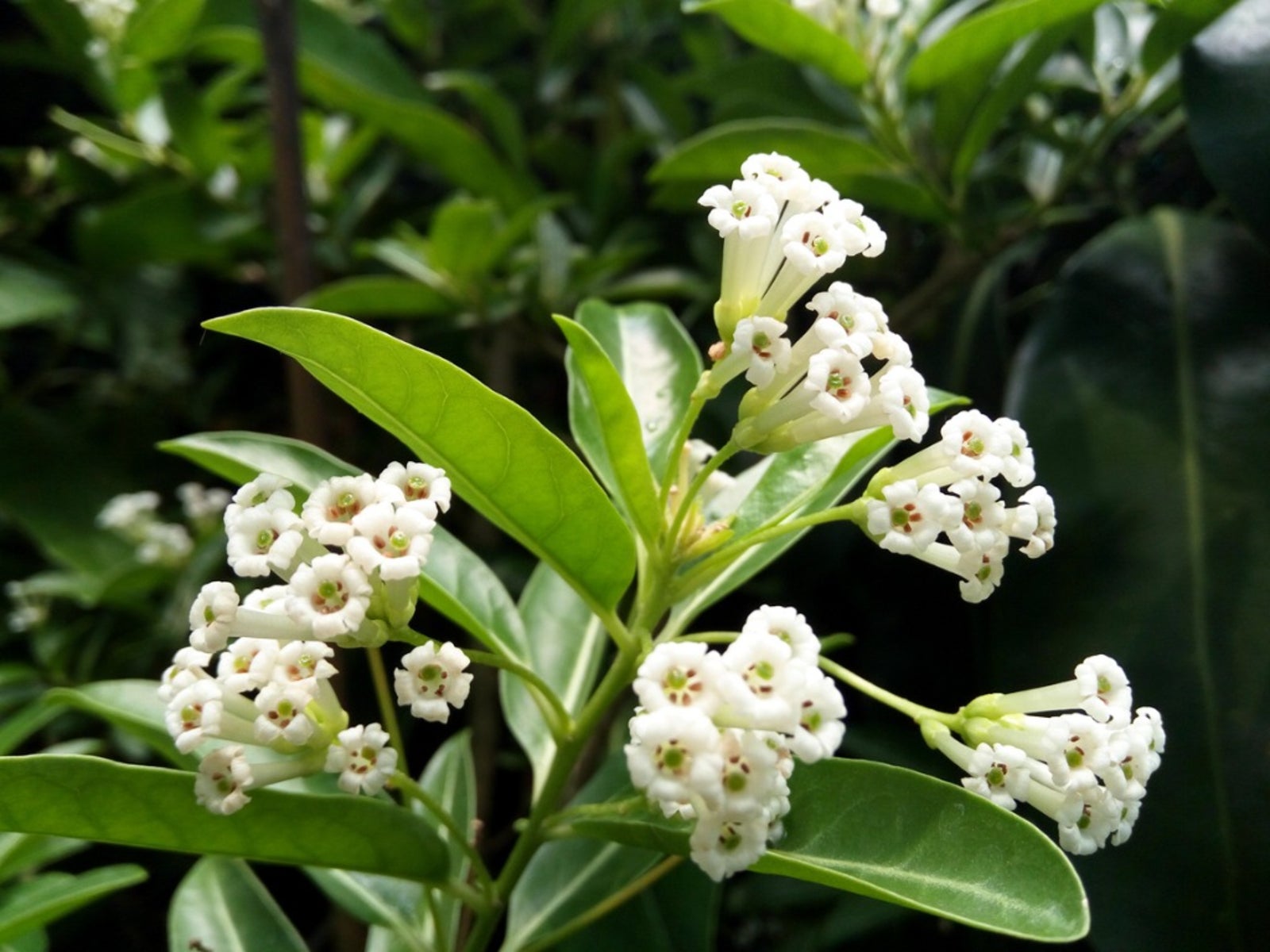Day Jasmine Varieties – Learn About Day Blooming Jasmine Care


Day blooming jasmine is a highly fragrant plant that is actually not a true jasmine. Instead, it is a variety of jessamine with the genus and species name Cestrum diurnum. Jessamines are in the Solanaceae family of plants along with potatoes, tomatoes, and peppers. Read to learn more about growing day jasmines, as well as helpful tips on day blooming jasmine care.
Day Jasmine Varieties
Day blooming jasmine is a broadleaf evergreen shrub that grows 6 to 8 feet (2 m.) tall and 4 to 6 feet (1-2 m.) wide. It is native to the West Indies and is widely cultivated in India. Day blooming jasmine is hardy in zones 8 through 11. In late spring to midsummer, day blooming jasmine bears clusters of tubular white flowers that are highly fragrant. At sunset, these flowers close up, capturing their fragrance within them. After the flowers fade, day blooming jasmines produce dark purple-black berries that were once used to make ink. The fragrant flowers attract many pollinators to the garden, while the berries provide food for a variety of birds. Since day blooming jasmine berries are eaten and digested by birds and some small mammals, its seeds have escaped cultivation. These seeds quickly germinate and take root almost anywhere where they come into contact with suitable soil and sunlight. Day blooming jasmine was introduced to areas of the Southeastern U.S., the Caribbean, and Hawaii as a tropical garden plant. However, now in many of these locations, it is considered an invasive species. Be sure to check with your local extension office for day blooming jasmine’s invasive species status before planting it in your garden. Some popular Cestrum varieties that are also fragrant and similar in growth and habit include night blooming jasmine, yellow cestrum, and the red and pink varieties of cestrum known in some locations as butterfly flower.
How to Grow Day Blooming Jasmine Plants
Also known as Chinese inkberry, white chocolate plant, and Din ka Raja (king of the day), day blooming jasmine is mainly grown for its highly fragrant blooms, which are described as having a chocolate-like scent. In the landscape, it is grown as a privacy hedge or screen because of its evergreen nature and tall, columnar habit. Day blooming jasmines prefer to grow in full-partial sun and in moist soils. They are not particular about soil pH or quality. They are oftentimes found growing wild in vacant lots, pastures, and along roadsides, where their seeds have been deposited by birds. Their growth rate is so fast that they may not even be noticed until they have grown out of control. Plants can be kept under control in garden or patio containers with regular pruning following the bloom period as part of regular day blooming jasmine care. Due to their sweet, intoxicating fragrance, they make excellent patio plants or specimen plants grown near windows or outdoor living spaces where the fragrance can be enjoyed.
Sign up for the Gardening Know How newsletter today and receive a free copy of our e-book "How to Grow Delicious Tomatoes".

Darcy is a former contributor to Gardening Know How. She is a professional landscape designer and gardening writer with experience in plant sales. An avid gardener, Darcy has a passion for sharing practical tips to help others grow.